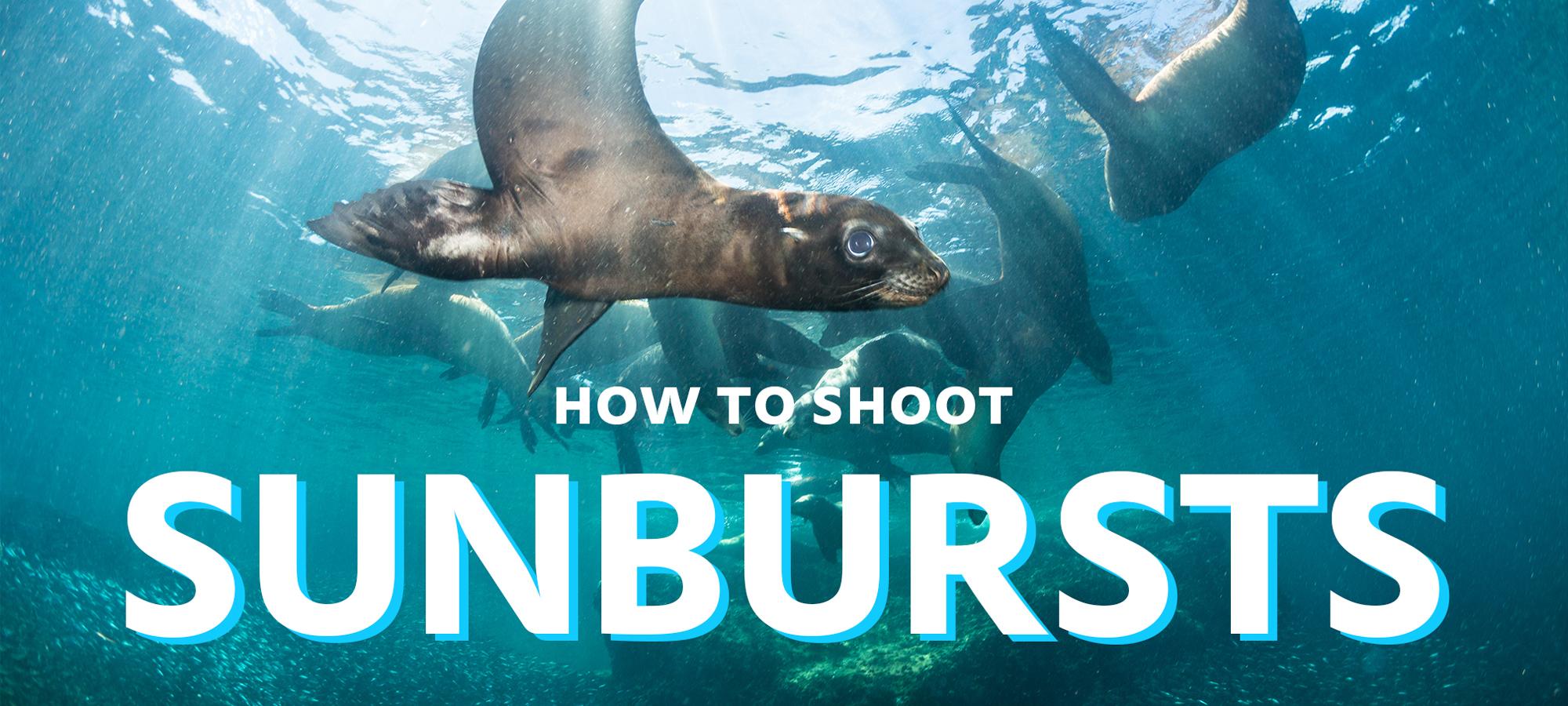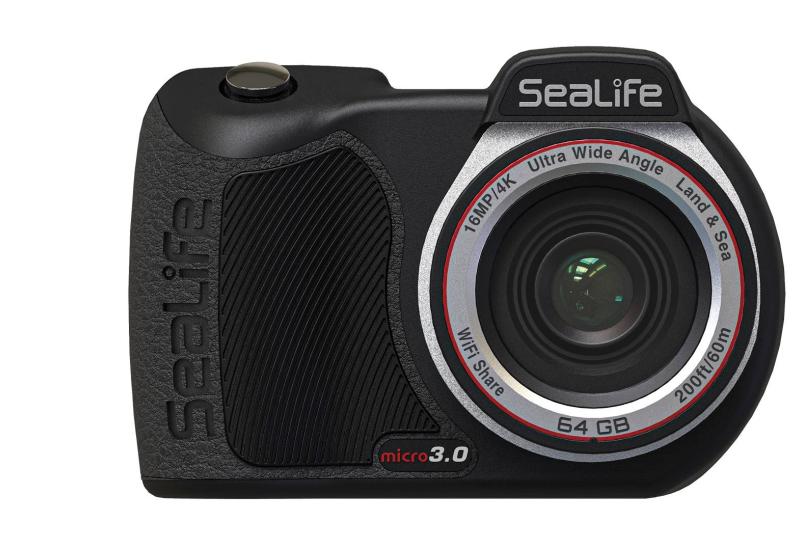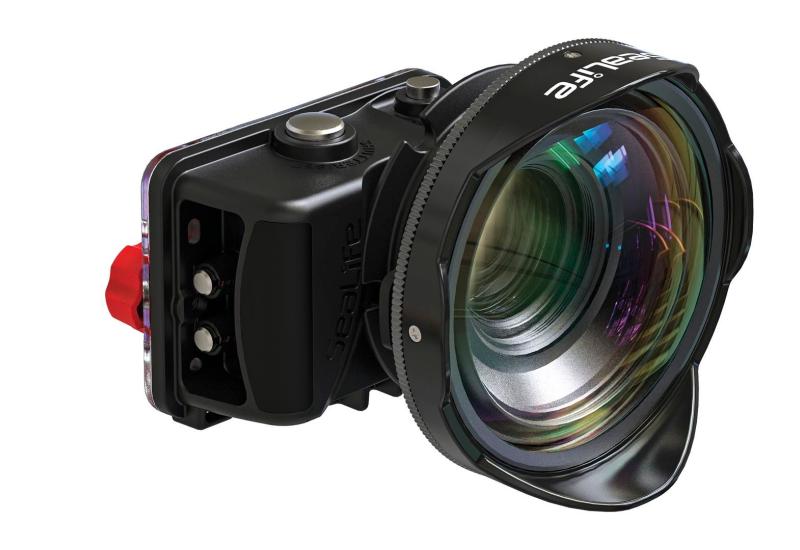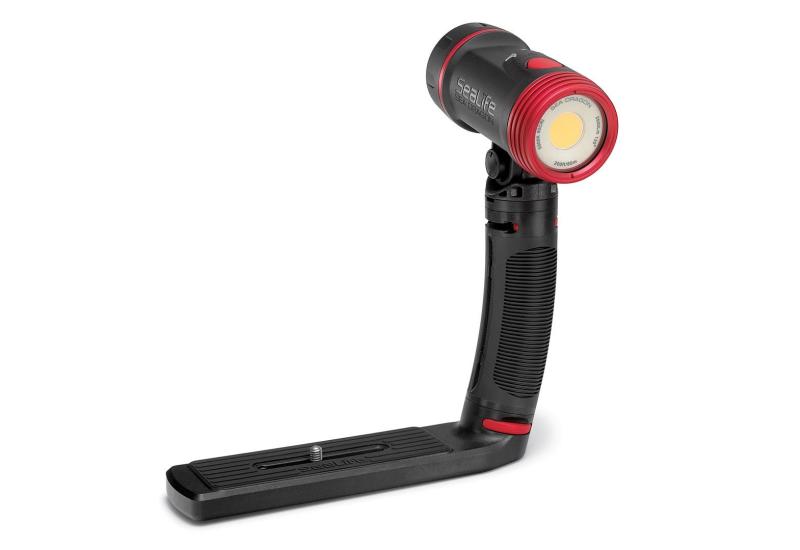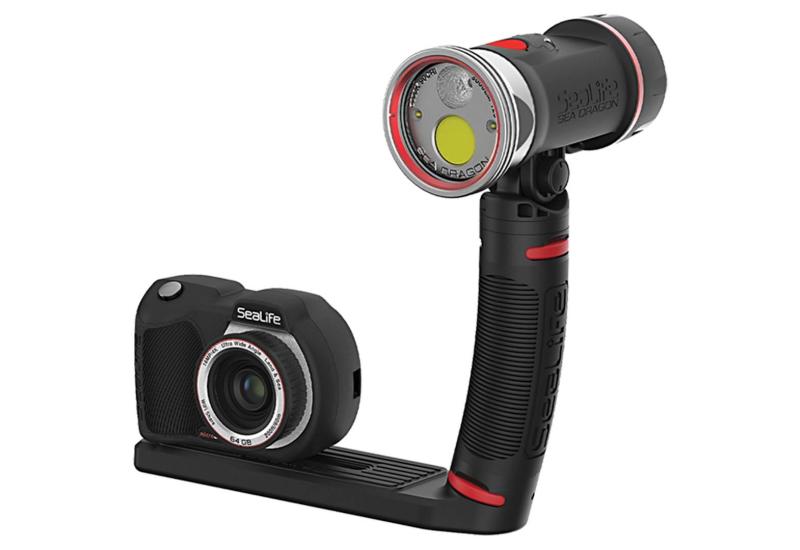Underwater Photography Tips for Shooting Sunbursts
Sunbursts add magic to underwater photos. The crisp rays pierce through the water column adding energy, excitement, and a background element that balances and unifies subjects featured in the composition.
How do you create sunbursts? Most underwater cameras can create sunbursts when used with a strobe or flash and some manual settings. Let’s discuss the settings you can use to start creating sunbursts in your underwater wide-angle photos.
Block The Light
We’re shooting directly into the sun when shooting sunbursts. And the sun is bright; it’s literally a burning ball of gas! A good sunburst shot features a small white ball with sun rays bursting from it, so we want to avoid settings that let too much light into the camera and result in a large white blown out area in the top of the frame.
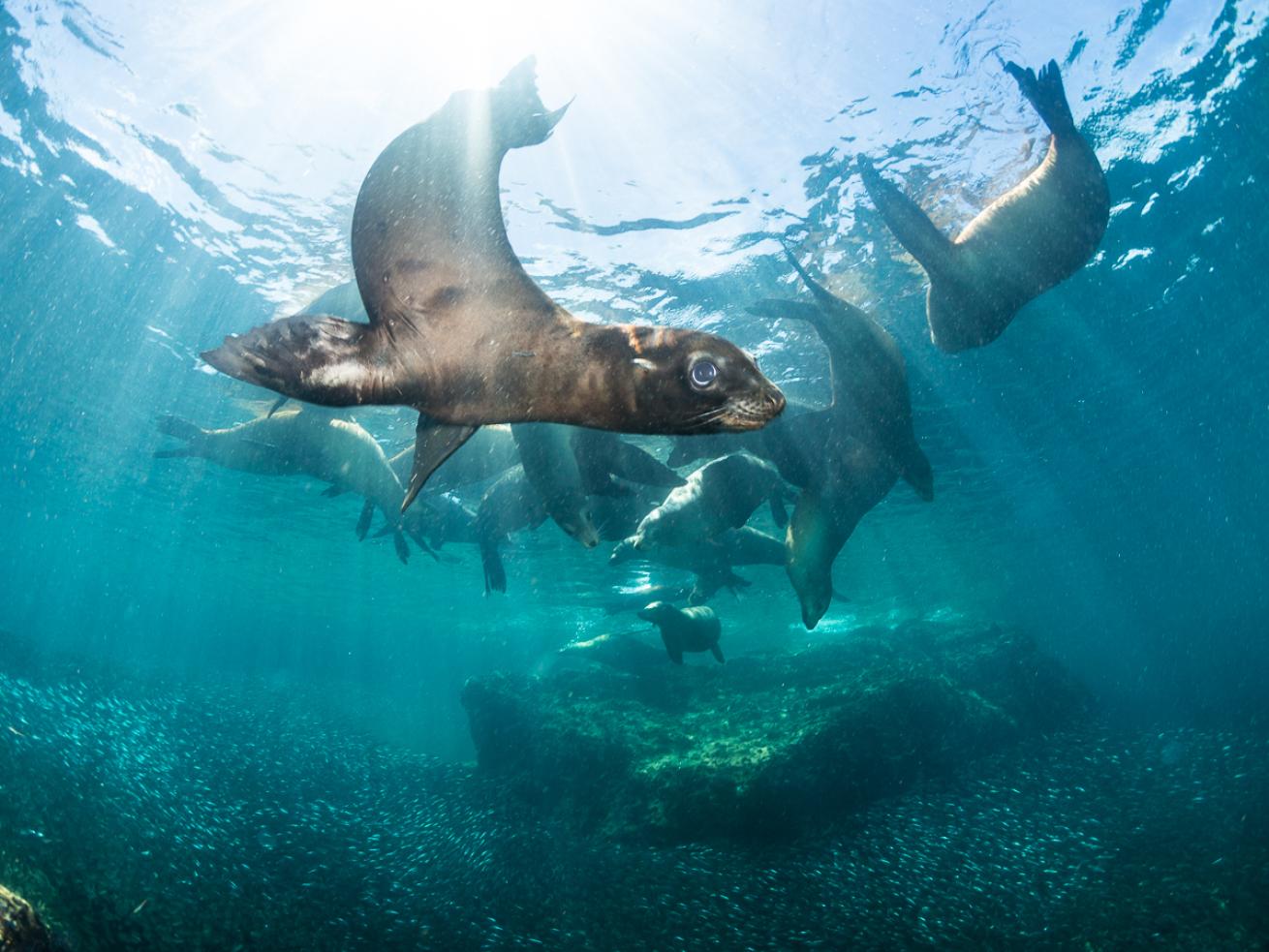
Brent DurandAvoid settings that let too much light into the camera and result in a large white blown out area in the top of the frame
There are three settings we need to adjust in order to block most of the light entering the camera.
ISO: ISO is the camera sensor’s sensitivity to light. We want to keep the ISO at its lowest setting in order to keep this light sensitivity to a minimum.
Shutter Speed: Shutter speed helps control ambient light entering the camera. The sun is a strong ambient light source, so we want to use a fast shutter speed in order to minimize the ambient light entering the camera when the shutter (electronic or manual) is open. I recommend 1/200s. Divers with interchangeable lens cameras must stay away from the maximum sync speed, which could be 1/160s up to 1/250s. You never want to pass this max sync speed.
Compact camera shooters can go all the way up to 1/500 or greater, but I’d still recommend starting at 1/200s.
Aperture: The third variable in our ambient light exposure, aperture, should be stopped down. Stopping down the aperture, or using a higher f-stop number, will reduce the size of the opening between aperture blades, letting less light enter the camera. This higher f-stop will also produce more depth of field, which is useful for the close focus wide-angle shots we typically shoot with sunbursts. Compact cameras should start at f/9, while interchangeable lens cameras can start around f/18.
Pull the Strobes in Close
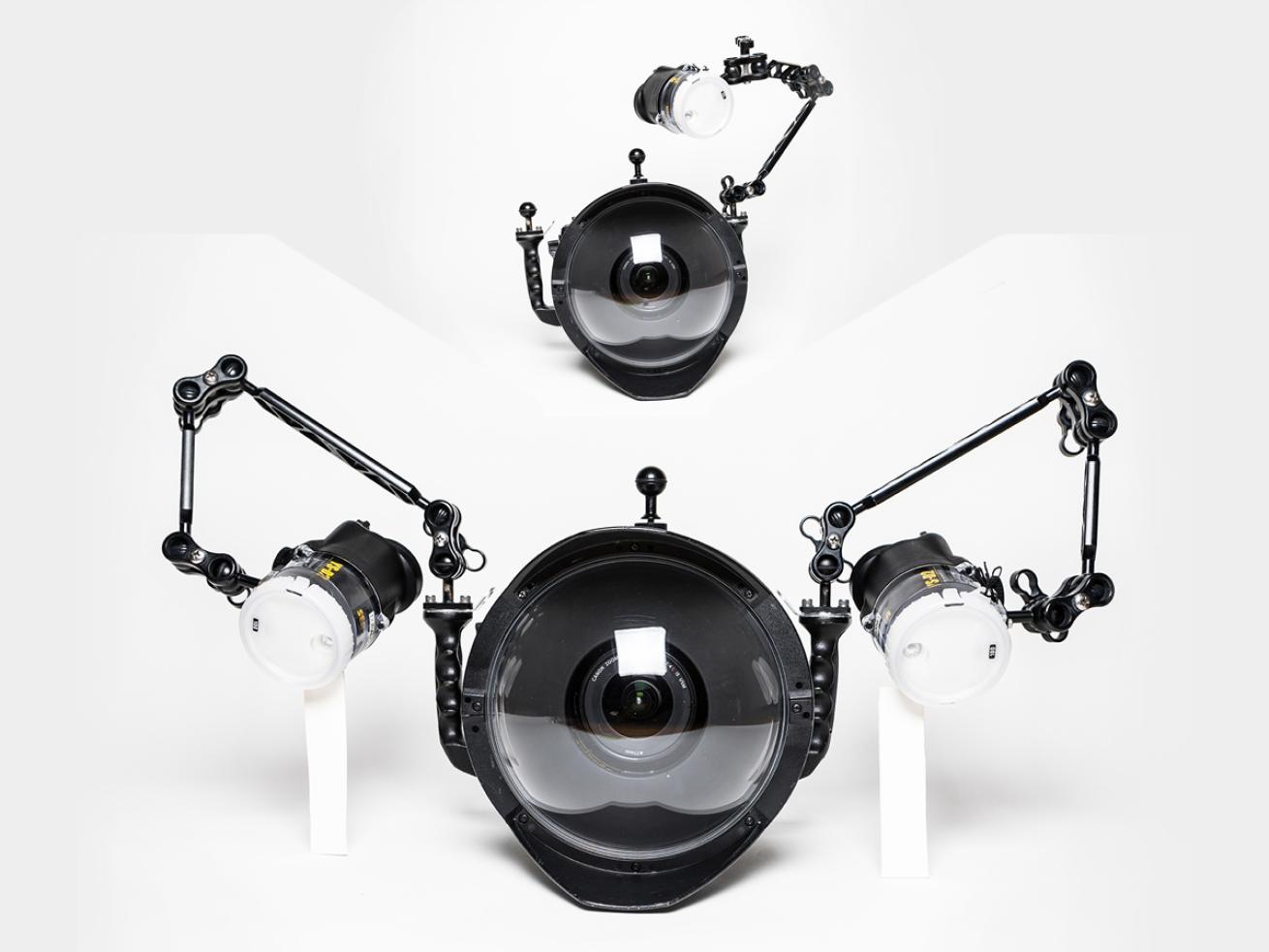
Brent DurandIdeal strobe setup for shooting sunbursts underwater.
This tip is essential if you have a foreground subject close to the camera. In the tip above we adjusted the settings to minimize sunlight entering the camera, but we still want to incorporate some nice strobe light.
Fortunately, our strobes are powerful. Turn the strobes up to full power and position them close to the housing dome. Light falloff is exponential underwater, so as we bring our strobes in closer to the subject, we exponentially increase the power of the light.
Find a Great Subject
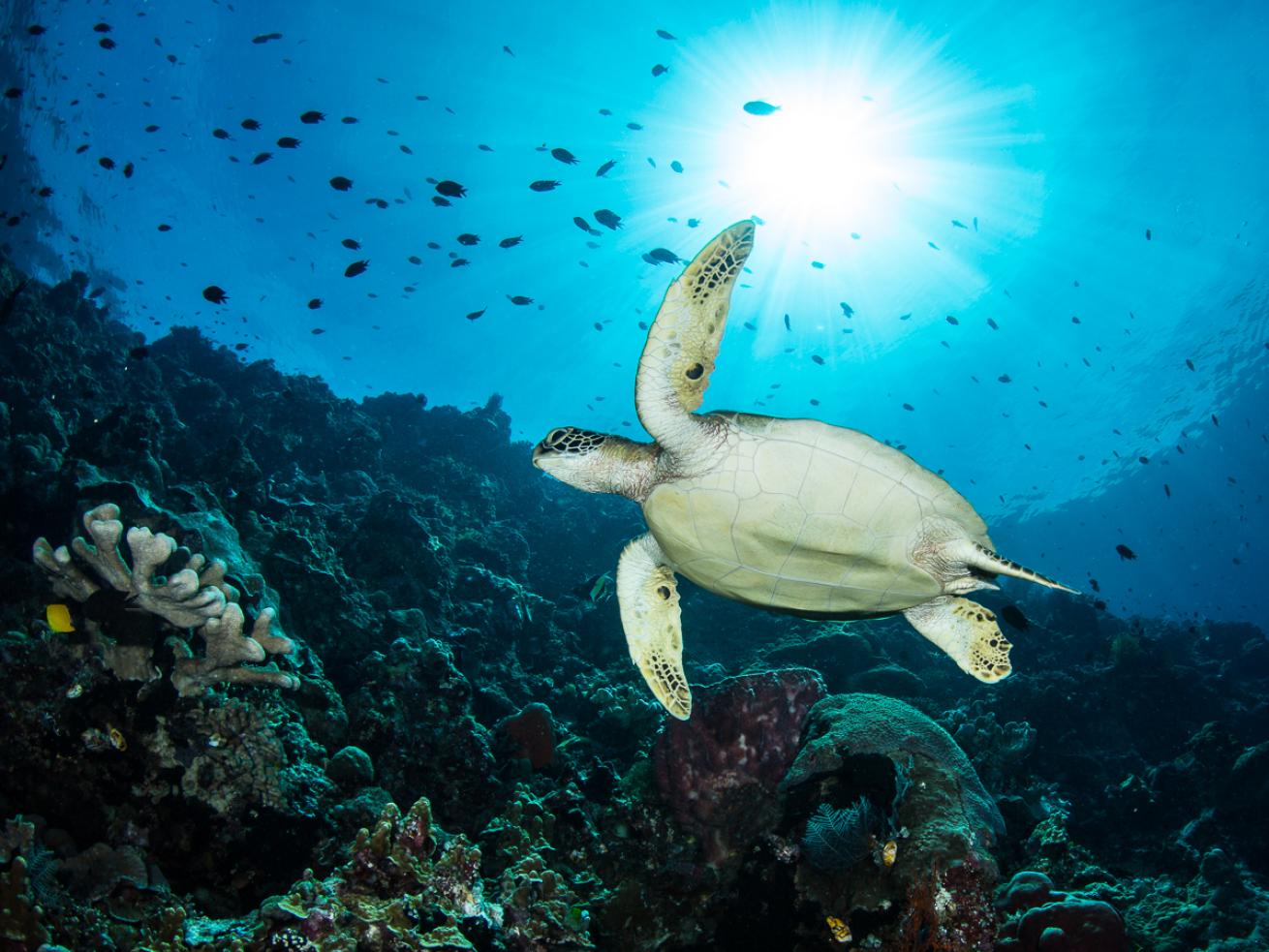
Brent DurandA great subject and a sunburst.
This tip is deceptively complicated. When shooting sunbursts, make the extra effort to find a clear and easy-to-recognize subject. Our sunburst shots are often dark, so this strong subject will make a big difference in helping your image pop for the viewer. Personally, I also like to find a colorful subject that contrasts with other ambient colors in the frame.
Follow these tips and you’ll be ready to hit the water and add some great sunburst photos to your underwater portfolio.
Brent Durand is a professional writer and underwater photo instructor. Find his in-depth video tutorial series at tutorials.brentdurand.com.
More
• Three Unusual Macro Photo Tips
• How to Choose the Best Underwater Camera Gear
• Three Unusual Wide-Angle Underwater Photo Tips

